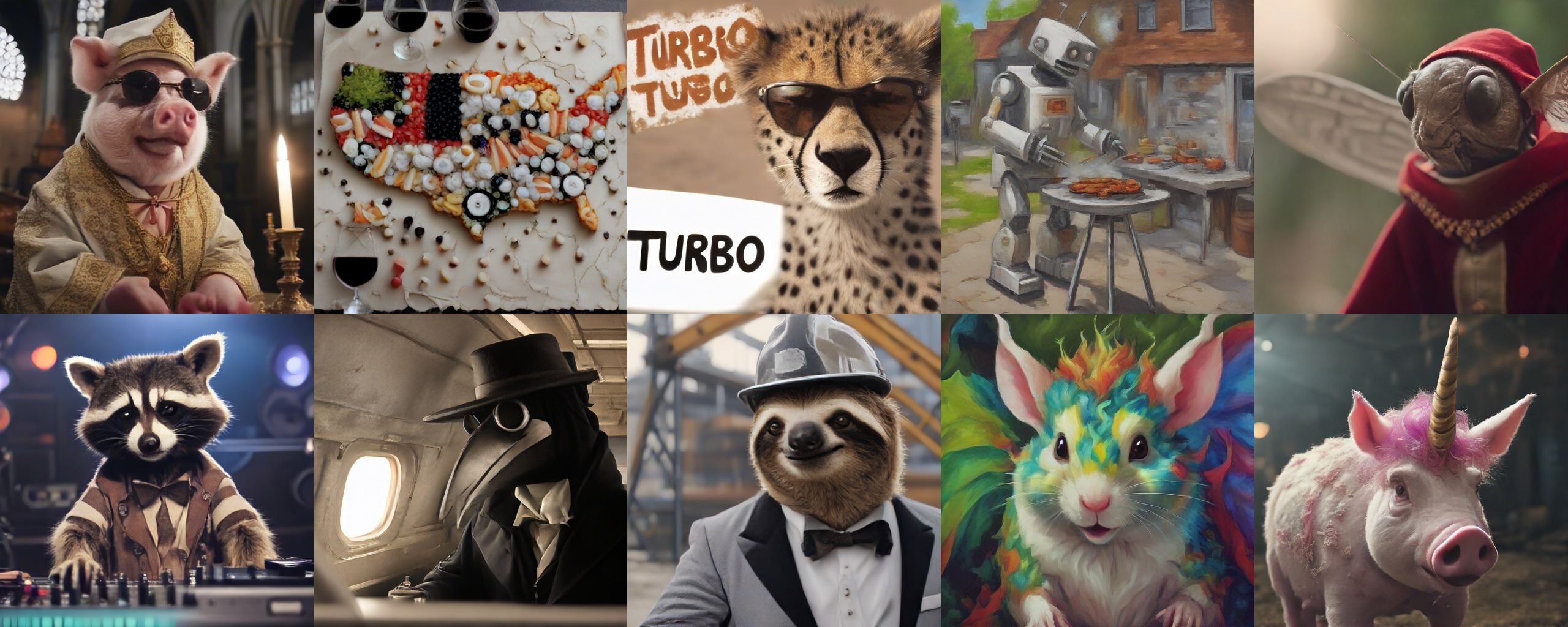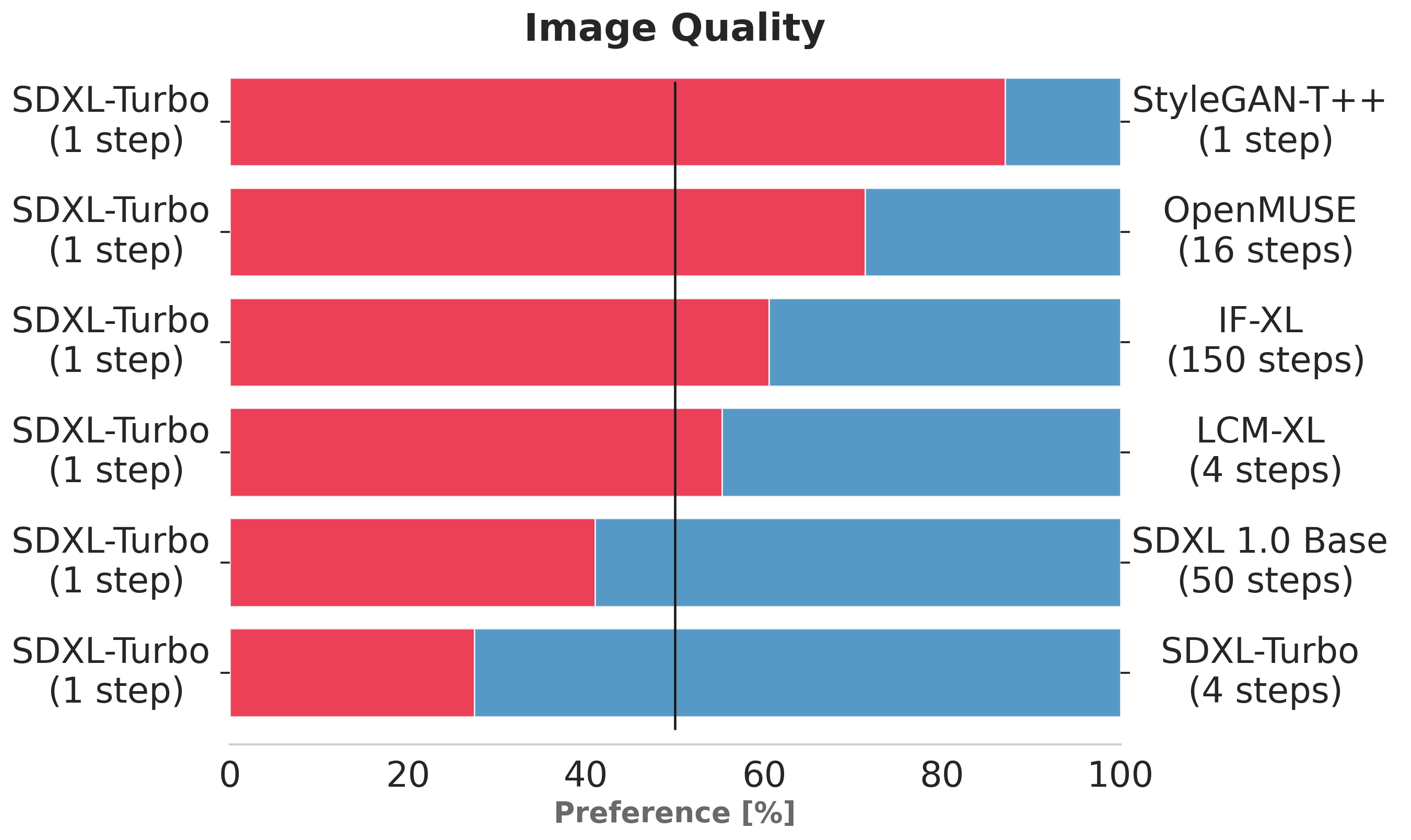pipeline_tag: text-to-image
SDXL-Turbo Model Card
 SDXL-Turbo is a fast generative text-to-image model that can synthesize photorealistic images from a text prompt in a single network evaluation.
A real-time demo is available here: http://clipdrop.co/stable-diffusion-turbo
SDXL-Turbo is a fast generative text-to-image model that can synthesize photorealistic images from a text prompt in a single network evaluation.
A real-time demo is available here: http://clipdrop.co/stable-diffusion-turbo
Model Details
Model Description
SDXL-Turbo is a distilled version of SDXL 1.0, trained for real-time synthesis. SDXL-Turbo is based on a novel training method called Adversarial Diffusion Distillation (ADD) (see the technical report), which allows sampling large-scale foundational image diffusion models in 1 to 4 steps at high image quality. This approach uses score distillation to leverage large-scale off-the-shelf image diffusion models as a teacher signal and combines this with an adversarial loss to ensure high image fidelity even in the low-step regime of one or two sampling steps.
- Developed by: Stability AI
- Funded by: Stability AI
- Model type: Generative text-to-image model
- Finetuned from model: SDXL 1.0 Base
Model Sources
For research purposes, we recommend our generative-models Github repository (https://github.com/Stability-AI/generative-models),
which implements the most popular diffusion frameworks (both training and inference).
- Repository: https://github.com/Stability-AI/generative-models
- Paper: https://stability.ai/research/adversarial-diffusion-distillation
- Demo: http://clipdrop.co/stable-diffusion-turbo
Evaluation

 The charts above evaluate user preference for SDXL-Turbo over other single- and multi-step models.
SDXL-Turbo evaluated at a single step is preferred by human voters in terms of image quality and prompt following over LCM-XL evaluated at four (or fewer) steps.
In addition, we see that using four steps for SDXL-Turbo further improves performance.
For details on the user study, we refer to the research paper.
The charts above evaluate user preference for SDXL-Turbo over other single- and multi-step models.
SDXL-Turbo evaluated at a single step is preferred by human voters in terms of image quality and prompt following over LCM-XL evaluated at four (or fewer) steps.
In addition, we see that using four steps for SDXL-Turbo further improves performance.
For details on the user study, we refer to the research paper.
Uses
Direct Use
The model is intended for research purposes only. Possible research areas and tasks include
- Research on generative models.
- Research on real-time applications of generative models.
- Research on the impact of real-time generative models.
- Safe deployment of models which have the potential to generate harmful content.
- Probing and understanding the limitations and biases of generative models.
- Generation of artworks and use in design and other artistic processes.
- Applications in educational or creative tools.
Excluded uses are described below.
Out-of-Scope Use
The model was not trained to be factual or true representations of people or events, and therefore using the model to generate such content is out-of-scope for the abilities of this model. The model should not be used in any way that violates Stability AI's Acceptable Use Policy.
Limitations and Bias
Limitations
- The generated images are of a fixed resolution (512x512 pix), and the model does not achieve perfect photorealism.
- The model cannot render legible text.
- Faces and people in general may not be generated properly.
- The autoencoding part of the model is lossy.
Recommendations
The model is intended for research purposes only.